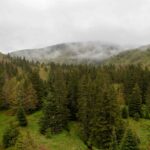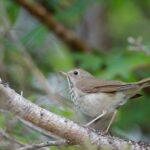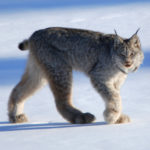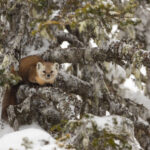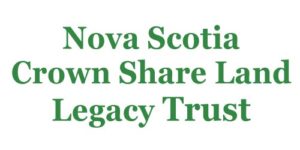Welcome to the Margaree Watershed!
01 Jun 2024
We are thrilled to announce conservation success in a part of the province that is new to the Nature Trust – but well-known and well-loved by many of you. Welcome to the Margaree Watershed!
The Nature Trust has secured approximately 371 acres (150 hectares) on the steep western slopes of MacLeods Mountain in the Margaree River Valley area of Unama’ki (Cape Breton). It holds extensive, intact stands of old growth hardwood forest, and – thrilling all the birders! – it is mapped critical habitat for Bicknell’s Thrush, which is listed as Threatened under the Federal Species at Risk Act (SARA) and listed as Endangered under the Nova Scotia Endangered Species Act.
The western boundary of the newly protected property also creates a corridor between two previously separated parcels of the Sugarloaf Mountain Wilderness Area; protected corridors like this allow wildlife, including the endangered Canada Lynx and American Marten who make their homes in this area, to move safely between habitats.
The famed Margaree River is one of the largest rivers in Nova Scotia and was designated as a Canadian Heritage River in 1998. It is home to a healthy and thriving population of Atlantic Salmon as well as Brook Trout and Gaspereau, thanks to countless generations of careful stewardship by the Mi’kmaq and community organizations such as the Margaree Salmon Association and the Margaree Fish Hatchery.
The Margaree Salmon Association records the history of the area in part as follows:
“Recognizing that the Mi’kmaq people inhabited this area since time immemorial, it is interesting to note that the Mi’kmaq word for the Margaree area is “Wiagajk” meaning the “mixing place.” This name refers to both environmental features and the historical significance of the area. Rich in salmon, or “Plamu” in Mi’kmaq, the river was an essential source of food supply for the Mi’kmaq people. Parties travelled on foot from the Bras d’Or region to set up camp along the banks of the Margaree River for five to six weeks every fall to harvest salmon for their community. To the Mi’kmaq people salmon represents strength, endurance and resilience. The life cycle of a salmon reflects all of those attributes. Harvested salmon would be shared with the elders and community members as in keeping with the tradition of “Netukulimk”–gathering from the land to provide for your well-being physically, spiritually and economically. Sharing is an important factor of Mi’kmaq tradition. The Mi’kmaq way of life is derived from centuries of interaction with, observation of and adaptation to the natural environment. The practice of taking only what is needed and wasting nothing is part of the Mi’kmaq science of survival intertwined with a spirituality and culture unique to the Mi’kmaq people.”
In fact, thanks to a long history of collaborative and proactive work, the Margaree River is the only river in Nova Scotia that consistently exceeds conservation requirement numbers of Atlantic Salmon.
The Province has protected 9000 hectares of wilderness in the upper reaches of the Margaree River, but many of the steep slopes connecting the plateau to the river are privately owned. The old growth and mature forests here are critical to keeping the overall temperature of the river and its tributaries cool, a necessary condition for a healthy population of salmon, trout and other river inhabitants.
The area is also considered to be relatively resilient to climate change, and the hardwood and mixedwood forests are champions of long-term carbon sequestration.
The Nature Trust is excited to join the thriving ecosystem of partnerships working to care for this large and critical watershed.
This project was undertaken with the financial support of the Government of Canada through the federal Department of Environment and Climate Change.
Our thanks as well for generous support from the Nova Scotia Crown Share Land Legacy Trust, a critical source of land securement funding for Nova Scotia’s land trusts.
The Margaree Watershed has joined the Nature Trust’s network of protected lands through our campaign to protect Twice the Wild and will move us closer to our target of 30,000 protected acres across Nova Scotia. Thanks to your support, this land will be protected, forever.

